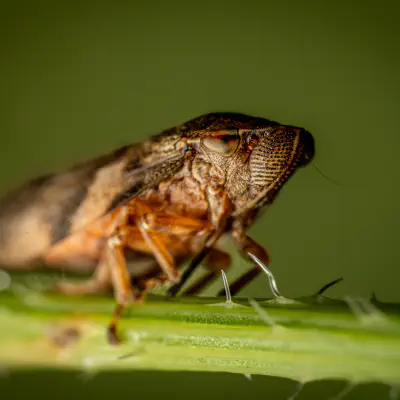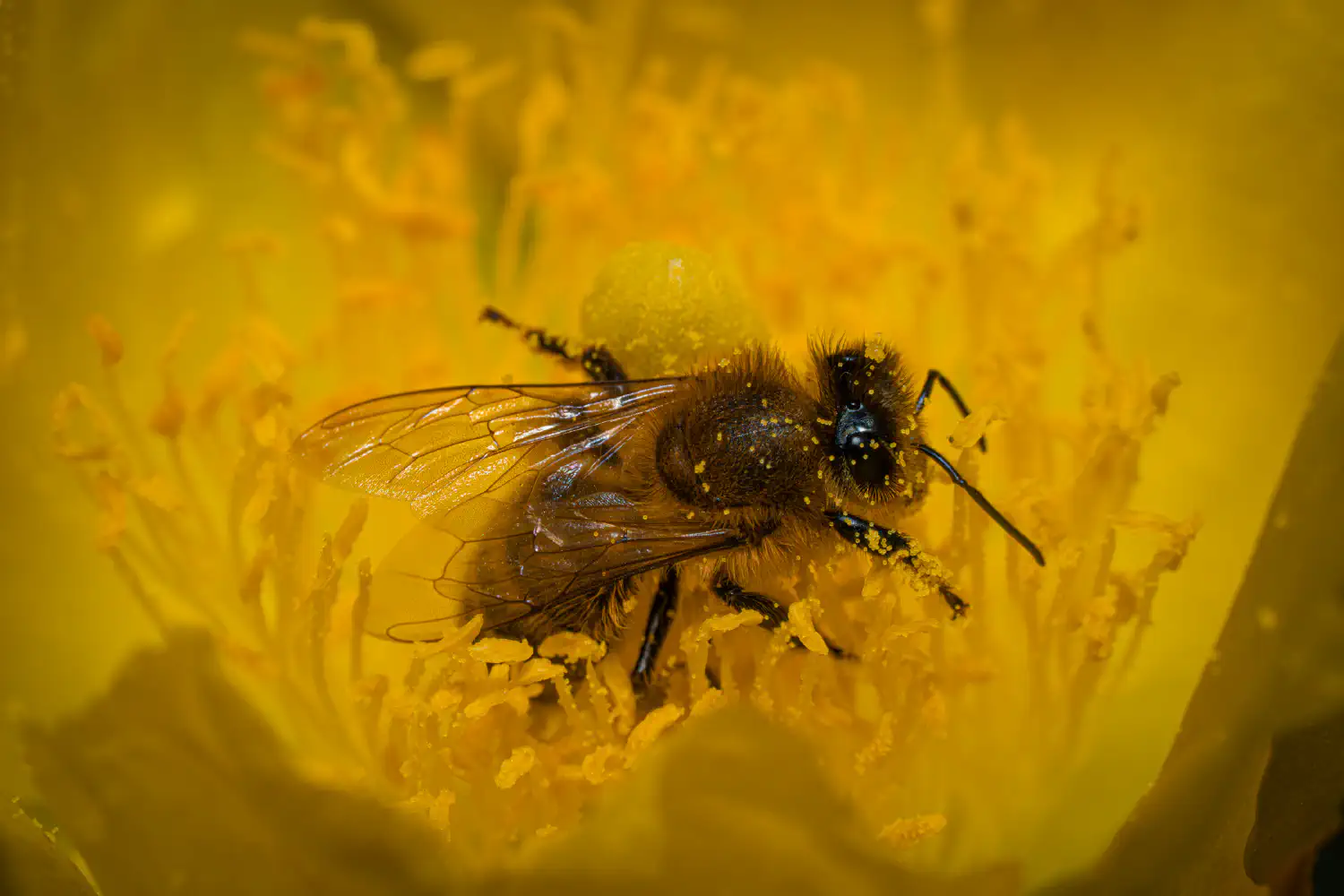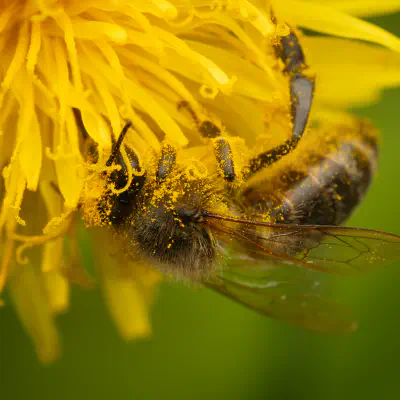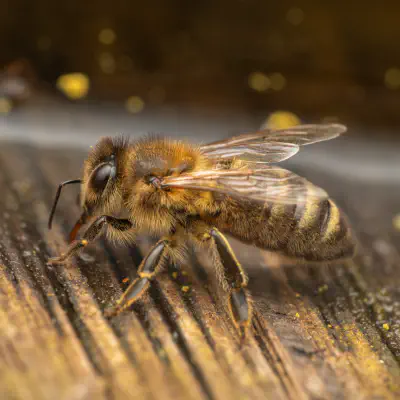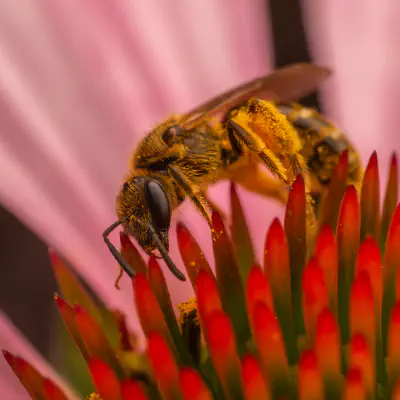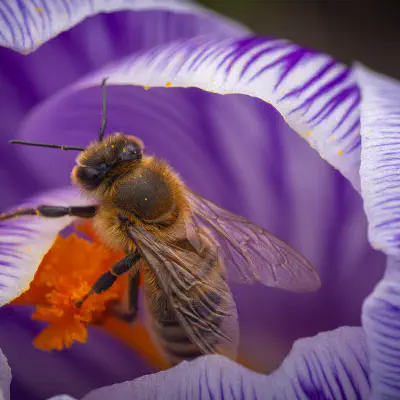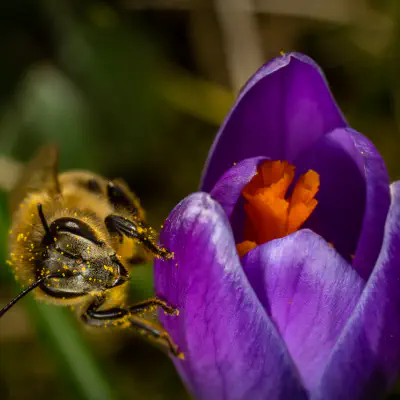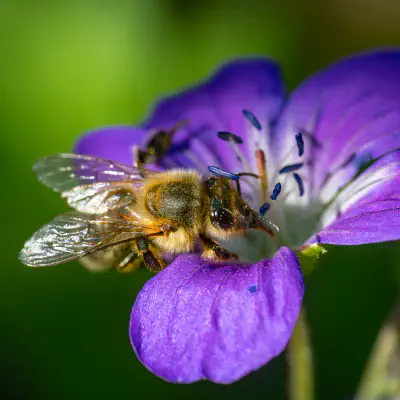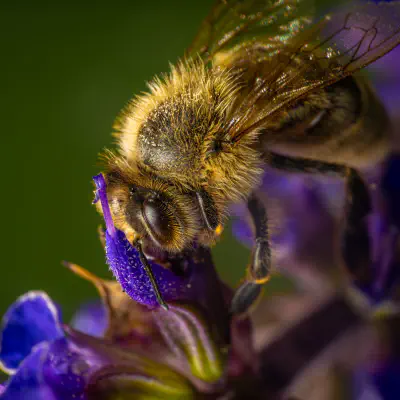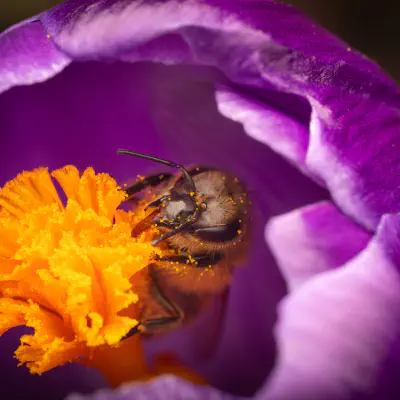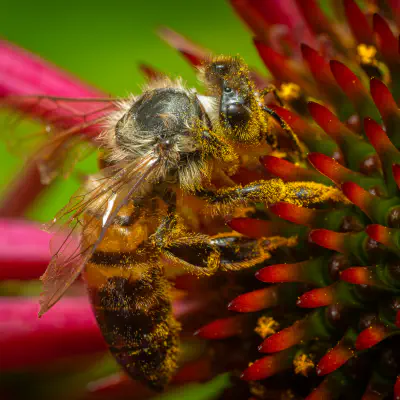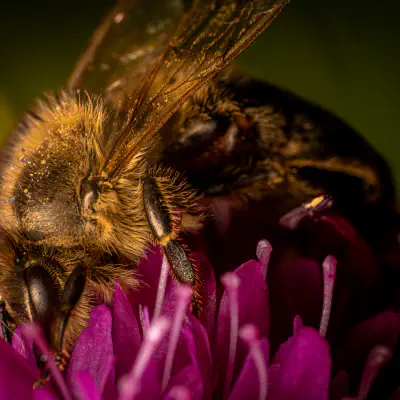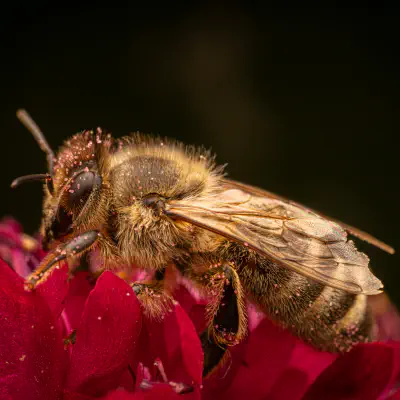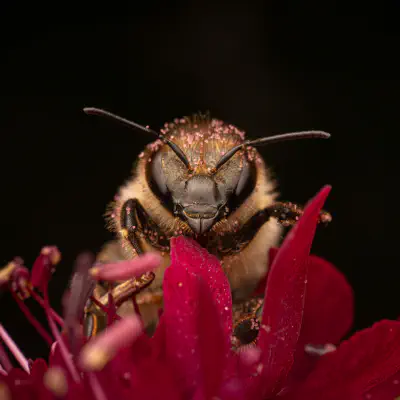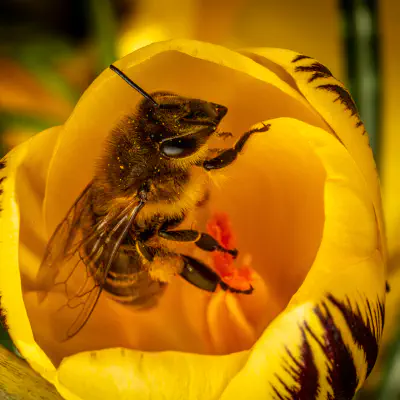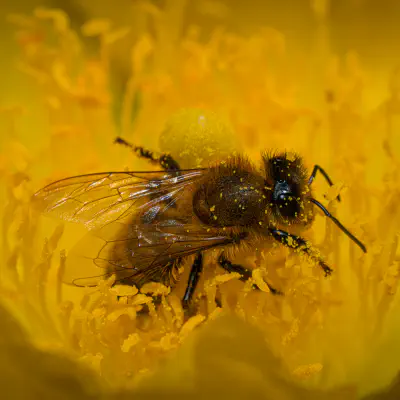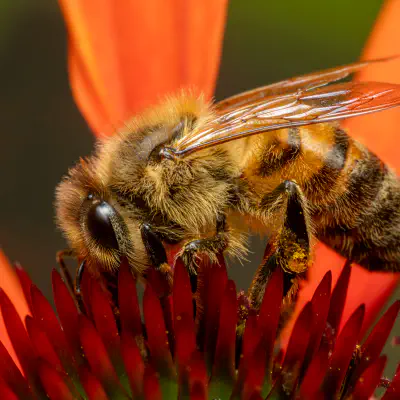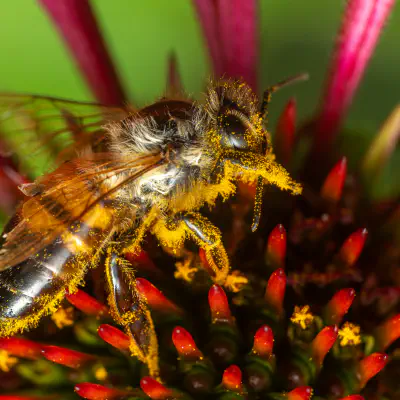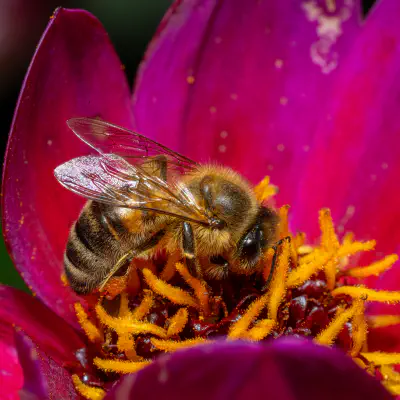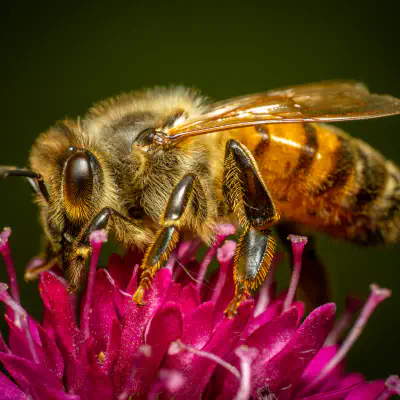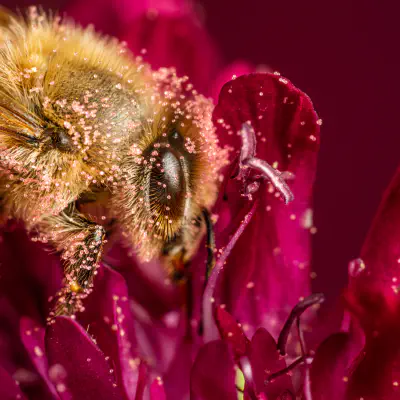Arthropods Daily – Issue No. 270 No. 270 |
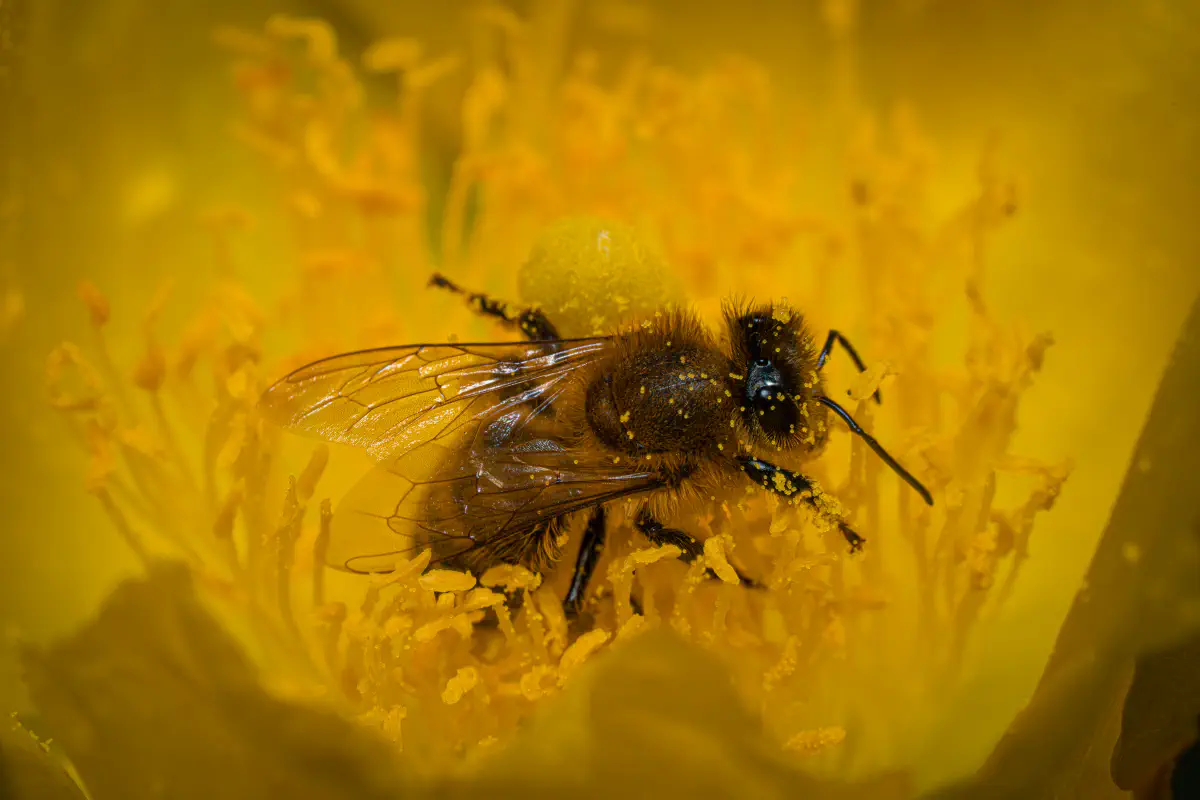
The western honey bee or European honey bee (Apis mellifera) is the most common of the 7–12 species of honey bee worldwide. The genus name Apis is Latin for "bee", and mellifera is the Latin for "honey-bearing", referring to the species' production of honey for the winter.
Ancestry Graph
%%{
init: {
'theme': 'base',
'themeVariables': {
'primaryColor': '#83a09c',
'primaryTextColor': '#212d2b',
'primaryBorderColor': '#fff',
'lineColor': '#fff',
'secondaryColor': '#006100',
'tertiaryColor': '#fff'
}
}
}%%
flowchart LR
classDef active fill:#fff
arthropods("phylum: Arthropods"):::active
arthropods-->insects("class: Insects"):::active
insects-->narrow-waisted-wasps-ants-and-bees("suborder: Narrow-waisted Wasps, Ants, and Bees"):::active
narrow-waisted-wasps-ants-and-bees-->honey-bees-bumble-bees-and-allies("family: Honey Bees, Bumble Bees, and Allies"):::active
honey-bees-bumble-bees-and-allies-.->bumble-bees("genus: Bumble Bees")
honey-bees-bumble-bees-and-allies-.->violet-carpenter-bee(["species: Violet Carpenter Bee"])
honey-bees-bumble-bees-and-allies==>western-honey-bee(["species: Western Honey Bee"]):::active
click bumble-bees href "/en/catalogue/arthropods/insects/narrow-waisted-wasps-ants-and-bees/honey-bees-bumble-bees-and-allies/bumble-bees/"
click violet-carpenter-bee href "/en/catalogue/arthropods/insects/narrow-waisted-wasps-ants-and-bees/honey-bees-bumble-bees-and-allies/violet-carpenter-bee/"
click western-honey-bee href "/en/catalogue/arthropods/insects/narrow-waisted-wasps-ants-and-bees/honey-bees-bumble-bees-and-allies/western-honey-bee/"
click arthropods href "/en/catalogue/arthropods/"
click insects href "/en/catalogue/arthropods/insects/"
click narrow-waisted-wasps-ants-and-bees href "/en/catalogue/arthropods/insects/narrow-waisted-wasps-ants-and-bees/"
click honey-bees-bumble-bees-and-allies href "/en/catalogue/arthropods/insects/narrow-waisted-wasps-ants-and-bees/honey-bees-bumble-bees-and-allies/"
This is not intended to be a dry lexicon. Personal stories and sensitive articles form the framework for our pictures: „Explained as easy as pie — How insects communicate with their environment“
Insects communicate in various ways, including pheromones, sounds, and visual signals, to interact with each other and survive.
